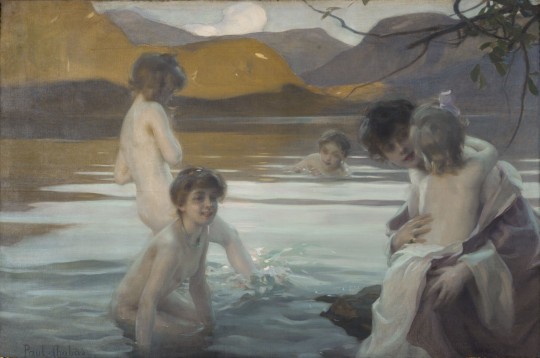#artist is paul chabas
Text
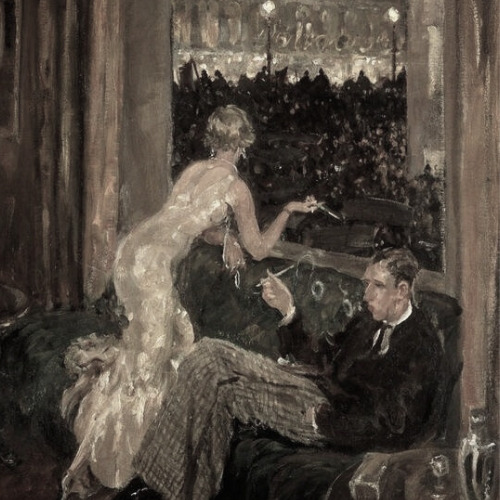

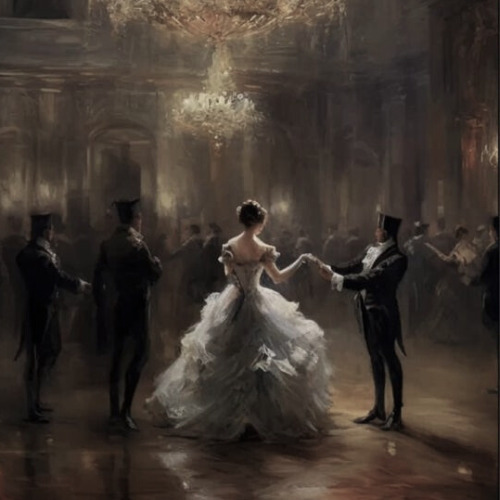

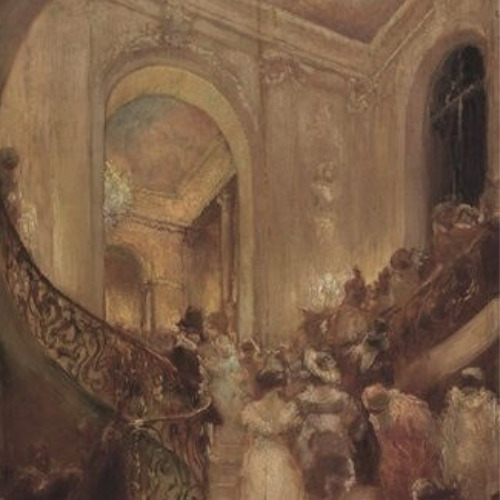
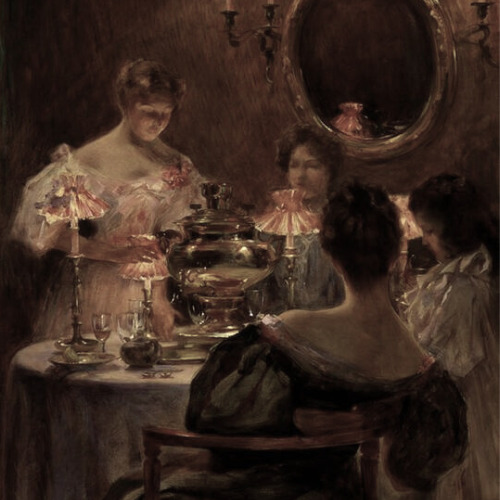
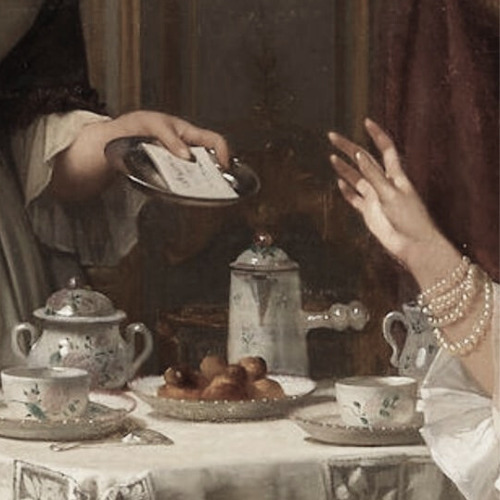
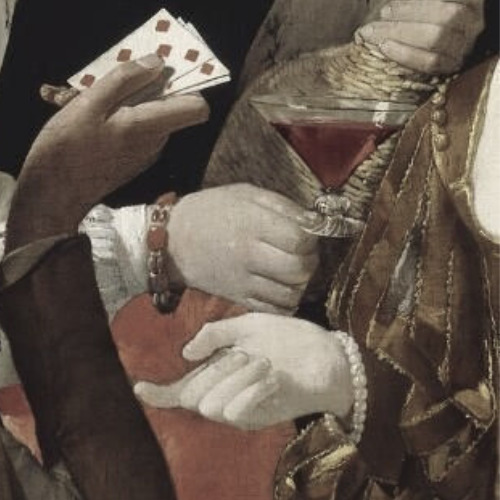
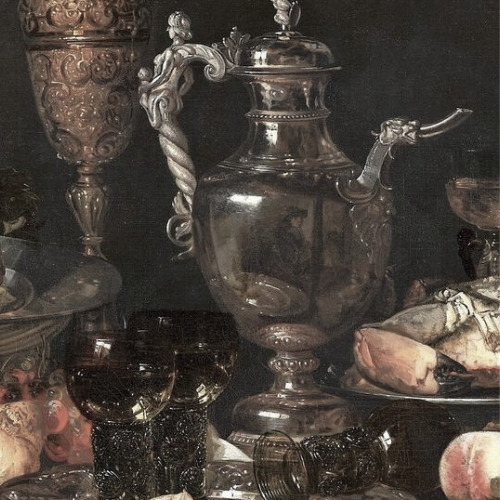
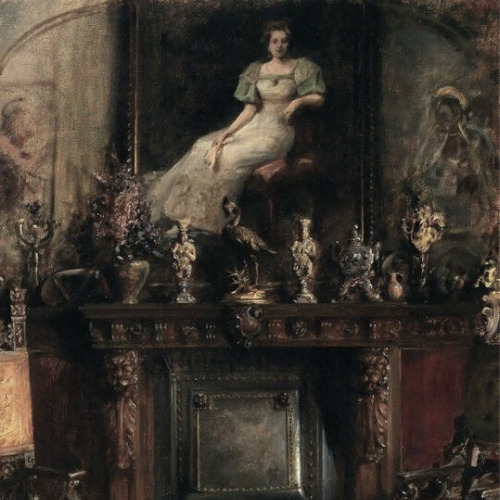
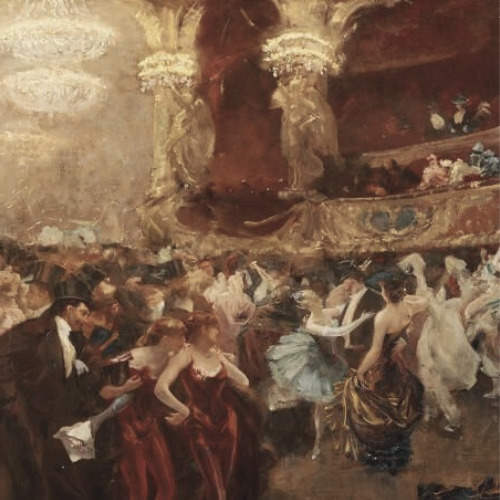

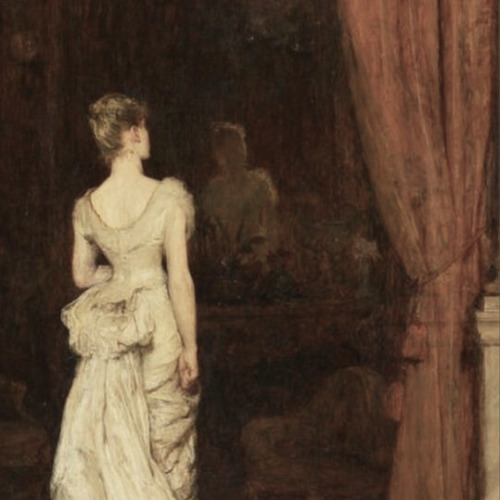
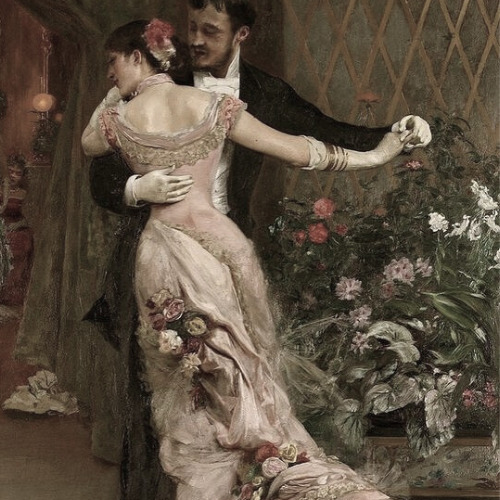

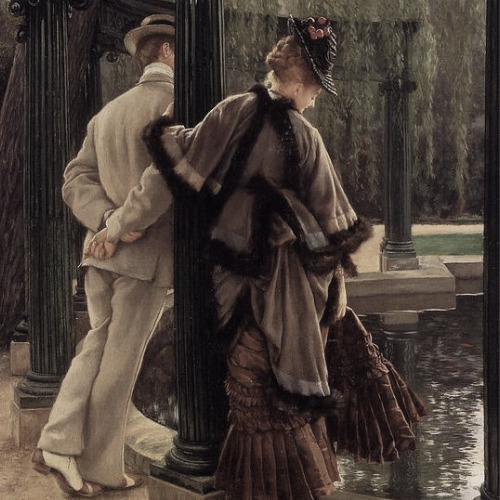
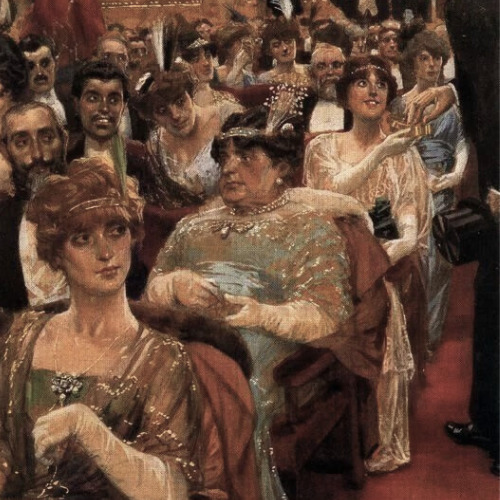
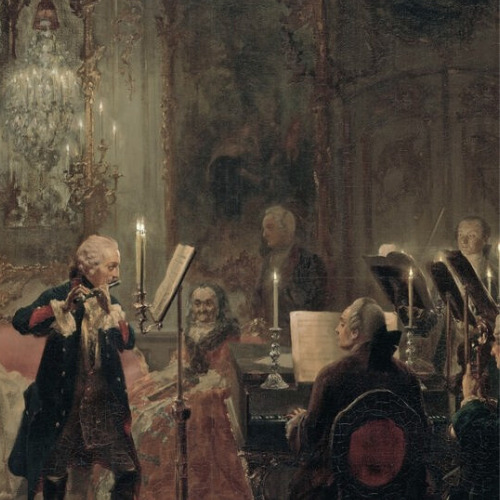



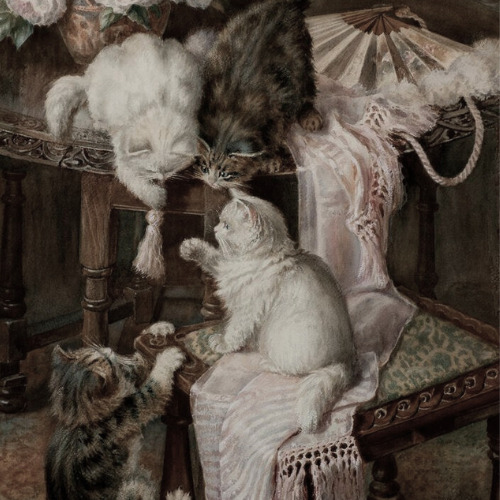

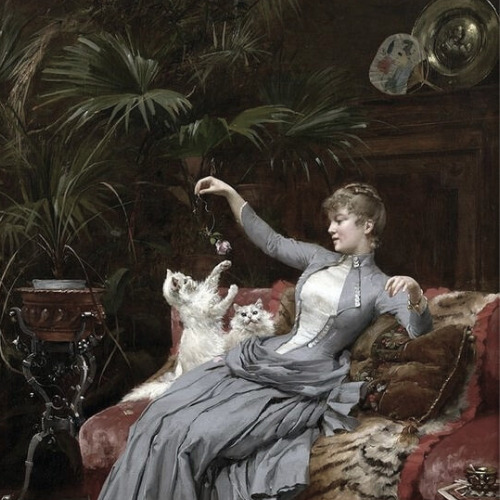


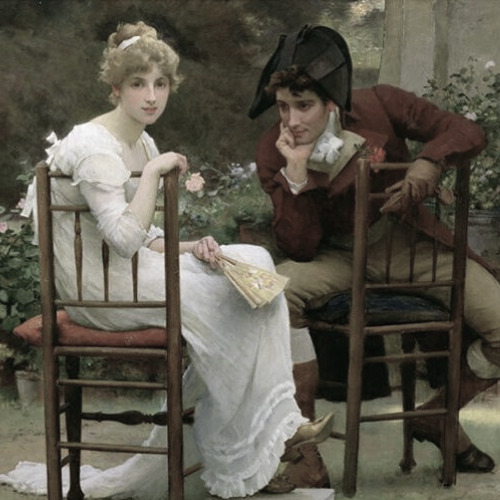
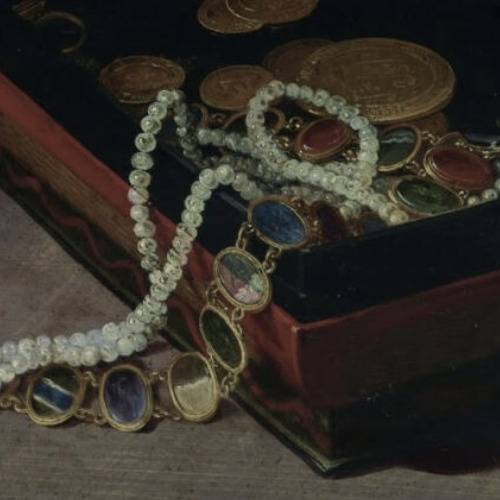

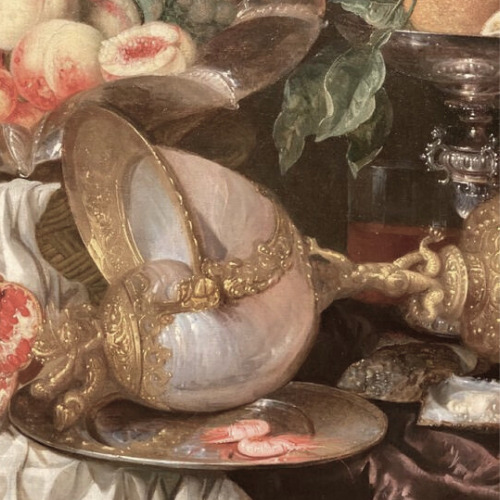
"There are people who have money and people who are rich."
#cant find it#cant find it-#artist is gaston la touche#artist is -gaston la touche#artist is irving r wiles#artist is charles desire hue#artist is georges la tour#artist is abraham van beyeren#artist is arthur von ferraris#artist is charles hermans#artist is franz xaver simm#artist is sir william orcahrdson#artist is rogelio de egusquiza#cant find artist--#artist is james tissot#artist is adolfo lozano#artist is adolph von menzel#artist is alfred stevens#artist is gyula benczur#artist is frederic soulacroix#artist is minnie rosa bebb#artist is james tissot--#artist is leon herbo#artist is gustave bettinger#artist is paul chabas#artist is marcus stone#artist is jan brueghel#----cant find artist#artist is abraham van beyeren ---#art history
359 notes
·
View notes
Text

Paul Émile Chabas, Dancing nymphs, c.1899
197 notes
·
View notes
Text

Paul Emile Chabas (b.1869 - d.1937), 'Baigneuse devant un Lac (Bather by a Lake)', oil on canvas, no date (early 1900s), French, for sale for est. 1,000 - 1,500 CHF in Beurret & Bailly's Important Paintings Sale, March 2021; Basel, Switzerland.
#paul emile chabas#known artist#unknown sitter#french#1900s#basel#beurret & bailly#oil on canvas#lake
55 notes
·
View notes
Photo
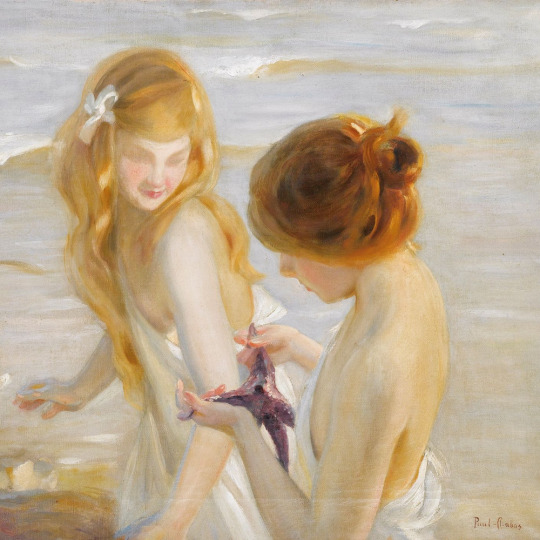


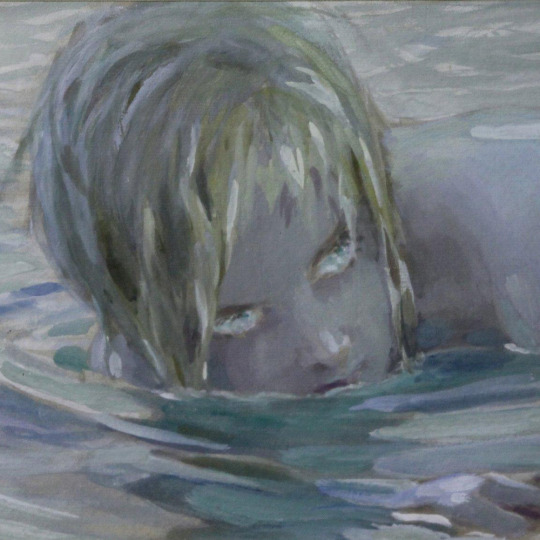

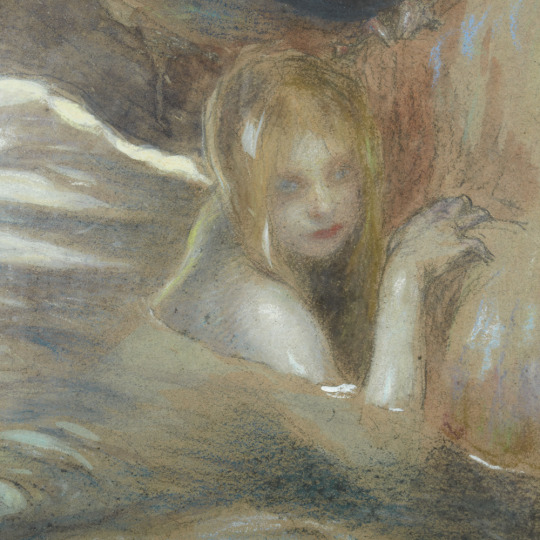
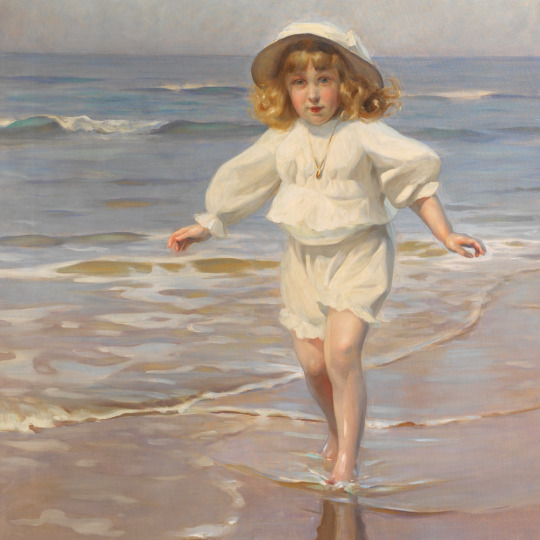

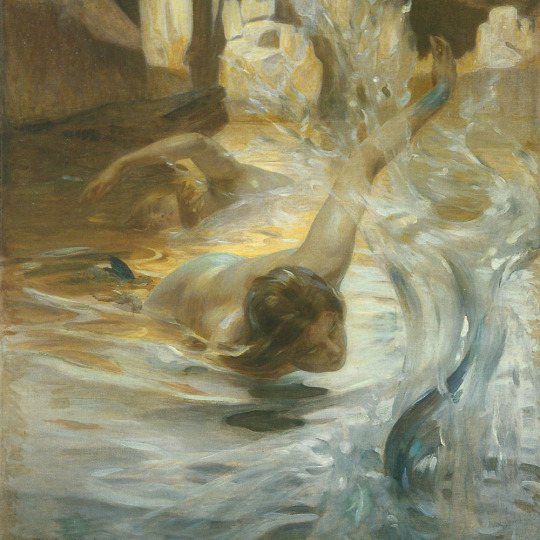
Artist I Like Series
Paul Émile Chabas 1869-1937 a French painter and illustrator and member of the Académie des Beaux-Arts.
#Paul Émile Chabas#Paul Emile Chabas#artist I like#art history#art#art inspo#fave#french#male artist#19th century art#20th century art#petal talks
68 notes
·
View notes
Text
Portrait Of A Young Woman In A Blue Dress by Paul Chabas

#paul chabas#oil paintings#paintings#painting#artists#art history#artist#art#artists on tumblr#classic paintings
11 notes
·
View notes
Photo
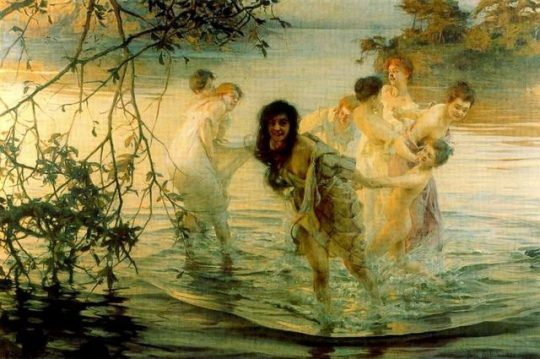
Joyous Frolics | Paul Emile Chabas
6 notes
·
View notes
Text


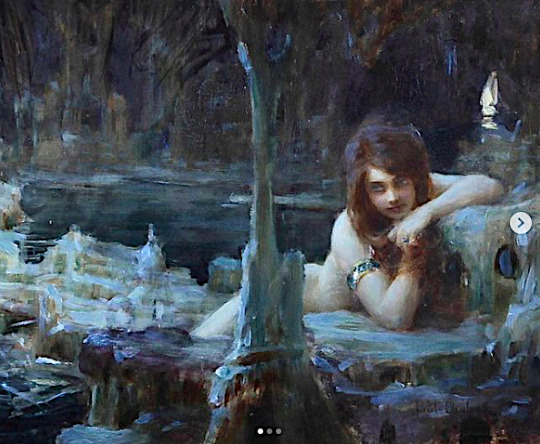
“She would be invisible forever to all mortals, save those few who have minds to believe, eyes to see. To these she is ever present, the spirit of Nature—a sprite of the meadow, a naiad of lakes, a nymph of the woods.” ~ Barbara Newhall Follett, “The House Without Windows”
La grotte de la Naïade by Paul Chabas (French artist, 1869-1937)
300 notes
·
View notes
Photo
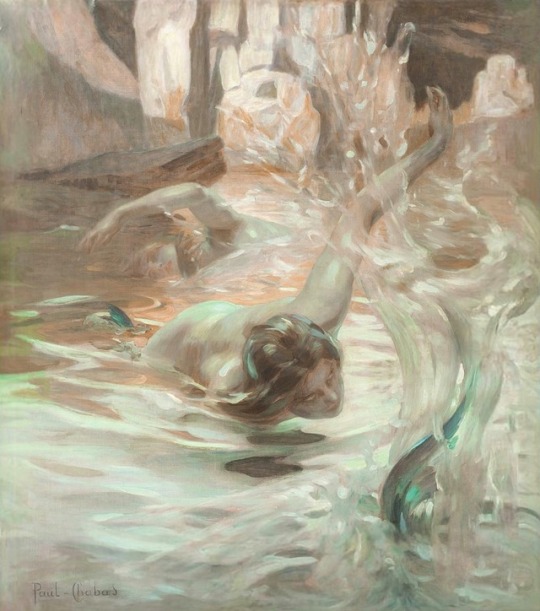
Naïades / Naiads.
Oil on Canvas.
111 x 124.5 cm. (43.70 x 48.81 in.)
Art by Paul Émiles Chabas.(1869-1937).
#paul émile chabas#paul emile chabas#french artist#french painter#naïades#naiad#sirène#mermaid#water nymph#nymphe
2K notes
·
View notes
Text

Young Naiad Art by French artist Paul Émile Chabas (1869-1937)
833 notes
·
View notes
Photo
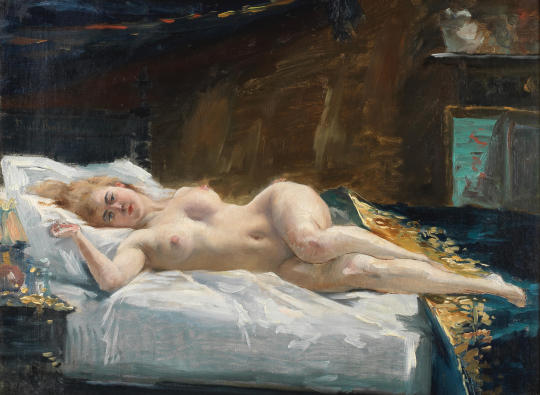
Paul Emile Chabas (1869-1937) French
“The Artist's Model”
127 notes
·
View notes
Text
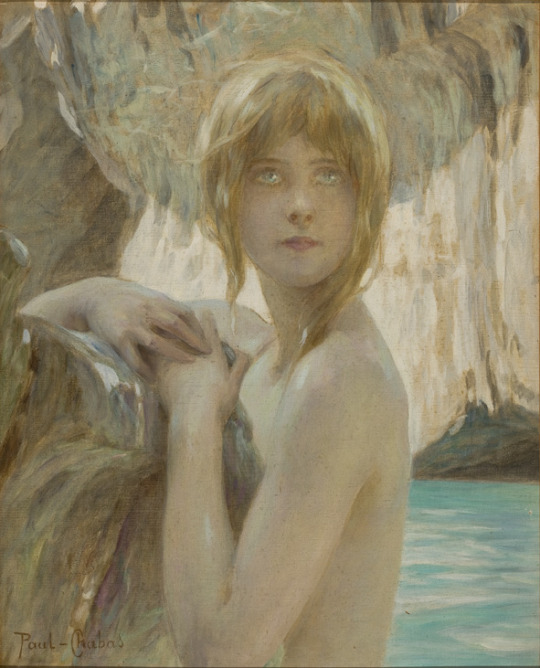
Paul Émile Chabas, Blonde nymph
107 notes
·
View notes
Photo
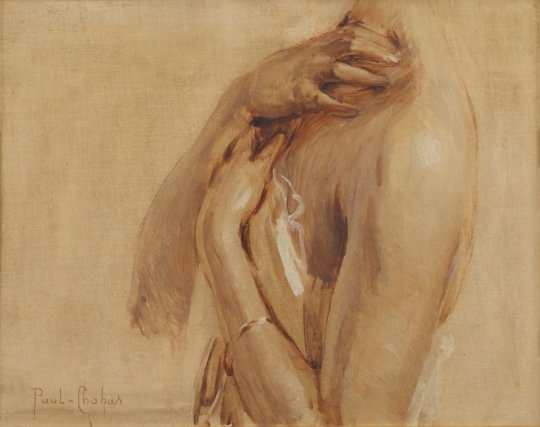
Paul Emile Chabas (b.1869 - d.1937), 'Study of a Female Bust', oil on canvas, no date (1900s?), French, for sale for 6,500 EUR at Galerie Alexis Bordes; Paris, France.
This work is a prototype for ‘Bathing Girl’. Chabas is perhaps most famous for his infamous painting ‘September Morn’ (c.1911), which caused much debate in America, which set off a chain of lawsuits and fines around its printing and display in newspapers and shop windows, as well as countless parodies.
#paul emile chabas#unknown sitter#known artist#oil on canvas#1900s#french#galerie alexis bordes#paris
23 notes
·
View notes
Text
The Many Lives of Lee Miller: Surrealist icon who photographed World War Two
If you were one of the few women photographers accredited by the U.S. Army at the start of World War II, chances were you were far from the front lines. Military regulations at the time dictated that female photojournalists, unlike their male counterparts, were not to enter combat zones.

But Lee Miller, the Poughkeepsie-born photographer and noted Surrealist operating as British Vogue’s war correspondent, was not one to be constrained.
Miller had made a habit of not taking no for an answer long before she accompanied American forces to document scenes such as the Blitz; nurses operating hospitals after D-Day; women serving across the armed forces; and just-liberated concentration camps.

Elizabeth ‘Lee’ Miller was born on the 23 of April 1907 in Poughkeepsie, New York. She was the middle child of Florence and Theodore Miller, a mechanical engineer and avid amateur photographer. She was something of a tomboy, always ready for the next big adventure and to try the biggest stunt.
Her first coup was gracing the cover of U.S. Vogue in 1927 at age 19. Lee Miller was walking down a crowded street in Manhattan. She was ravishingly beautiful: blonde hair stylishly bobbed, lips painted red, her slim figure clad in the latest fashions from Paris.
Perhaps it was Paris she was thinking about so deeply. Whatever it was it absorbs her entirely that as she stepped off the sidewalk she didn’t see a car speeding towards her.
At the last minute a man whisked her to safety. He turns out to be none other than the publisher Condé Montrose Nast. As soon as he saw the woman he saved, he decided she must model for his magazine.
A few short months later, Lee Miller’s face, drawn by Georges Lepape with the New York skyline for a backdrop, stares out from the cover of Vogue.

That cover launched Lee Miller’s modelling career. Within months she became a fixture on the New York social scene, hobnobbing with the likes of Charlie Chaplin, George Gershwin and the Vanderbilts.
Fashion greats such as photographer Edward Steichen zipped her into Lanvin and Lelong, draped her in pearls, swathed her in velvet. In one picture she models a Chanel evening gown covered with geometric embellishments, her body resembling a glorious art-deco building.
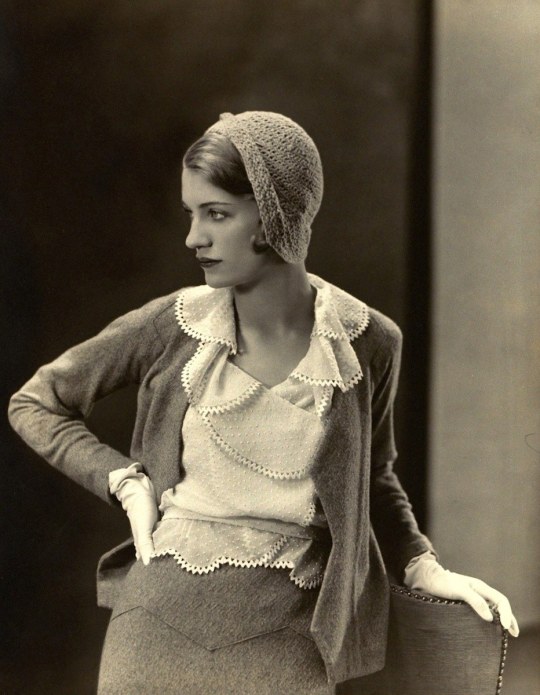
Lee was fêted and pursued by suitors. A glassware manufacturer even moulded a champagne coupe in the shape of her breast. It was all very glamorous but, for Lee, not wholly satisfying. Later, remembering her New York years, she said, ‘I looked like an angel but I was a fiend inside.’
This contradiction – stemming from a traumatising childhood into early adulthood,
Her father, Theodore, was an amateur-photographer and had begun to photograph his naked daughter long before that, in 1914, when she was seven. According to Miller herself, in that year, she, then known as Elizabeth, had been sent to stay with family friends while her mother was in hospital.
During the trip, she had been raped by a sailor; the attack left her with gonorrhea. For the next year, the child was subjected to daily douches of potassium permanganate, and k twice-weekly visits to the hospital to have her cervix painted with picric acid. Everything she touched at home was immediately sterilised.

It was during this year that Theodore had begun to photograph his daughter in the nude, his first composition being a take on the French artist Paul Chabas' September Morn, a painting of a nubile girl bathing, which had caused a scandal when it was shown in New York in 1913.
For his own picture, Miller required his daughter to pose, nude but for slippers, in the deep Poughkeepsie snow: the resulting picture was called "December Morn". Theodore made it using a stereoscopic camera, so that, viewed through accompanying glasses, his naked child appeared three-dimensional.
The early childhood experience would plague her throughout her adult life, and arguably cause her to constantly try to reinvent herself, wondering if she ‘ever was meant to fit together’.

Those reinventions – as a key figure in the Surrealist movement, fashion photographer, muse and tormented war correspondent – have made her the subject of plays, film scripts (Nicole Kidman wanted to play her in a film written by David Hare that was never made).
Reinvention of otherworldly beauty was also so evident in all her photographs. But Lee wasn’t happy as a model. A sketch she drew in her journal in 1930 shows a woman standing against a studio backdrop, daggers pinning her into place, as another woman in a hat looks on. No wonder, then, that she was hungry to forge her own identity beyond the camera’s frame – a frame that, to a woman who had been looked at by men her entire life, represented an implicit power imbalance.

She gave up her modelling career and set sail for Paris, intending, as she provocatively stated, to ‘enter photography by the back end’.
Bags of confidence, together with letters of introduction from Edward Steichen, convinced Man Ray to take her on as his assistant. He was instantly enchanted and their professional relationship blossomed into a love affair so tumultuous that it affected them both for years afterwards.
Miller was to befriend other iconic Parisian artists like Max Ernst and Picasso and intellectuals like Jean Cocteau. She would vacation with some of the most prominent figures in the art world at the time. Picasso would paint Lee six times and the two remained friends throughout the rest their lives. Picasso wanted to bed her but she held her distance.
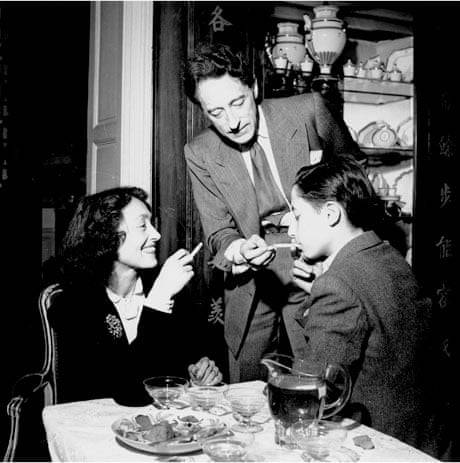
It was Lee Miller, not Man Ray, who discovered the photography technique known at "solarisation" bu turning on a light in their darkroom before the negatives had fully developed. It creates a dark line around the subject of the photograph and created groundbreaking images at the time. Ray is often credited with this discovery and he used it often in his own work, but it was actually Lee Miller who made the first picture of its kind on accident.
Man Ray’s portraits of Lee are sensuous and romantic, but even he never seemed able to see her as a whole, often depicting her body broken up into pieces.
He painted her lips floating disembodied in a mackerel sky in ‘Observatory Time: The Lovers’, and in his photographs her breasts, neck and eyes are removed from their context, palpably humming with sexual energy, the ultimate surrealist objects.
In December 1930, Miller's father, Theodore, had come to Paris from Poughkeepsie, New York, to see his daughter. Like any good parent might, he had taken pictures of her. Unlike most fathers, these photographs were shot in the nude, in the bathtub of their shared hotel suite. Lee Miller was 23.
The shots Man Ray took of Lee and Theodore Miller, she in a demure print frock and curled, child-like, in her father's lap, are deeply weird. They seem less of a father and daughter than of an older man and his much younger lover.
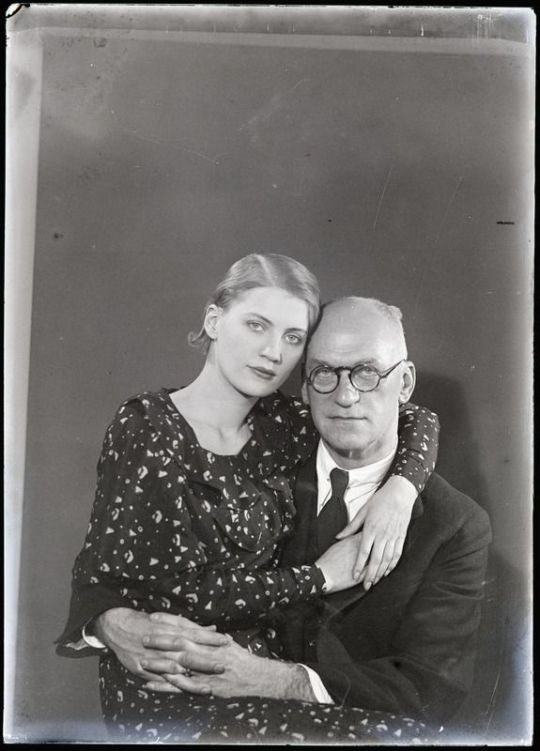
Perhaps Ray had heard rumours that Theodore had been Lee's actual childhood abuser, or he may have imagined it for himself. (No charges were ever brought against the unidentified sailor-rapist.)
In terms of age, Ray's own relationship with Lee was also ambiguously paternal: he was 17 years older than her, a pattern that would mark all her relationships with men. At any rate, Theodore and Ray seem to have gotten along famously. Together, the two men photographed Lee, nude, lolling on a bed with three other naked women.

It is hard not to see all this in psychological terms, if not in moral ones. Cursed with a perfect beauty, Miller became a focus of Ray’s internal need to violate. For Man Ray, this was aggravated by the masculine drive to compete.
If the countless celebrities photographed by Man Ray – Wallis Simpson, Aldous Huxley, Virginia Woolf, Picasso, Chanel, Schiaparelli, himself – the one he went back to most obsessively was Lee Miller. You can see why. Miller was a physical ideal, the kind of perfectly moulded, ice-blonde beauty beloved of Hitchcock; flawless, or at least imaginably so.
Lee Miller and Man Ray's exciting, passionate and tumultuous relationship ended and Man Ray did not take it well. In fact, one of his most famous pieces, Indestructible Object, includes her eye ticking on a metronome.
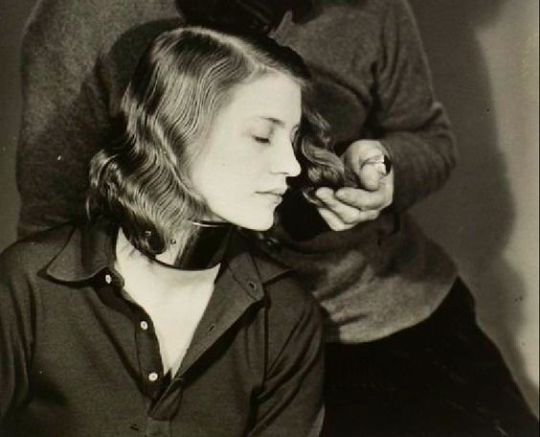
Ray's instructions to fans on how to make their own version of the work suggest the violence of his anatomical method. "Cut out the eye from a photograph of one who has been loved but is seen no more," he writes, bitterly. "Attach the eye to the pendulum of a metronome and regulate the weight to suit the tempo desired. Keep going to the limit of endurance. With a hammer well-aimed, try to destroy the whole at a single blow."

That done, the photographer, ever the drama queen, sat for a self-portrait called "Suicide" with a noose around his neck and a gun pointed at his head.
Hell hath no fury like a Surrealist scorned.

When their affair ended, Lee moved back to New York and opened her own studio, where she worked ‘in the style of Man Ray’, as she advertised in a bold appropriation of his name.
She hardly needed the help. Clients such as Saks Fifth Avenue and Elizabeth Arden paid handsomely for pictures by the woman who was herself ‘one of the most photographed girls in Manhattan’.
But in just a few years the Lee Miller Studio closed when Lee married an Egyptian, Aziz Eloui Bey, and moved with him to Cairo. She felt stunted by Egypt’s restrictive society but produced some of her best work there, driving into the desert with her trusty cocktail kit in the boot to take photographs of the landscape.
Her husband, however, let Lee spend extended holidays in Europe with the Surrealist set, where she met painter and art collector Roland Penrose, the man who eventually became her second husband. They would be happily married for the rest of their lives until death. She at last found someone who accepted her whole. But it still wouldn’t be enough for Lee.

By 1939, it was time for another reinvention. War broke out, the Blitz rained down on London, and Lee, urged on by her friend, the photojournalist, collaborator and sometime lover David Scherman, got accredited as a war correspondent for (of all places) British Vogue.
Her editor, Audrey Withers, expected soft-focus photo-essays about war privation, but Lee had other ideas.
Her reportage was gruesome, intimate and important. On the front lines at the siege of Saint-Malo, Lee documented the Americans’ first use of napalm and described a company ready for action, ‘grenades hanging on their lapels like Cartier clips, menacing bunches of death.’

She shot close-ups of the faces of German Nazis who had committed suicide in Leipzig and took powerful portraits of starving prisoners following the liberation of Dachau and Buchenwald.
When she arrived in Paris during the Liberation the first thing she did was go to Picasso's studio. There they are pictured smiling holding each other tight, probably beyond relieved that they were both alive. Picasso is quoted saying in astonishment "the first Allied soldier I should see is a woman- and she is you."
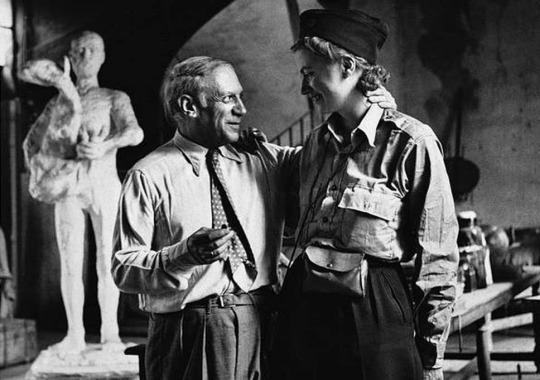
When Hitler fled Munich at the end of the war, Lee and Scherman were the first of the press corps to reach his apartment, where they drank his cognac and napped in his bed. They propped a picture of Hitler on the rim of his bathtub, set Lee’s dirty combat boots on the bathroom rug and took the now-famous photograph of her bathing in Hitler’s tub.
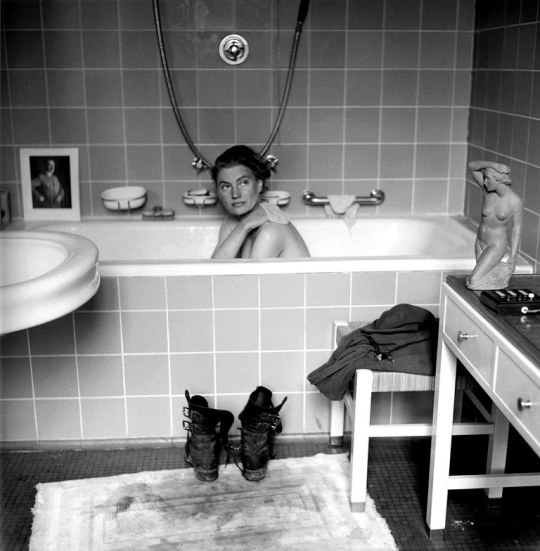
The war made Lee feel alive.
The image of Miller in Hitler’s tub was the one that led to the end of her Vogue career. The public was outraged at what they interpreted as flippant disregard for the ravages of war. Being accused of insensitivity inevitably took its toll, but it was what she saw, felt, and experienced during those years that would eventually send her into a struggle with depression.
She loved her uniform, tailored on Savile Row. She loved roughing it: washing in her helmet and subsisting on K-rations. And for a woman always searching for meaning in her life, documenting the war for readers back home gave her purpose. ‘Believe this,’ she cabled to Vogue, and the pictures she sent back were indeed horrifying. They came at a cost: Lee was never able to distance herself from her subject. She threw her entire self into her work.

Lee suffered mightily postwar.
The trauma of what she had seen haunted her for the rest of her life. Today we would call it PTSD. In postwar England, Lee was told by her doctor ‘we cannot keep the world permanently at war just to provide you with excitement’.
On her return to London after the war, she was feted. "Who else has written equally well about GIs and Picasso?" her editor said. "Who else can swing from the Siegfried line one week to the new hip line the next?"

Desperate to ward off a sense of anticlimax, she returned to eastern Europe. But soon she was pregnant at 40 years old and finding the prospect of motherhood scarier than any front line.
She missed the action, despite suffering post-traumatic stress. She also felt increasingly sidelined: in staid, patriarchal postwar Britain, her husband was the one in demand.

Finding the inspiration to write and take photographs became harder and eventually she gave it up entirely, hiding more than 60,000 negatives and contact sheets in the attic and becoming so tight-lipped on the subject that even her own son, Antony, knew nothing about her war work until he was an adult. An entire piece of herself was boxed up and placed out of sight.
Depressed at her loss of looks and gain in weight, she found solace in drink and cooking elaborate gourmet meals for her guests at Farley Farm House in East Sussex, her home until her death in 1977.
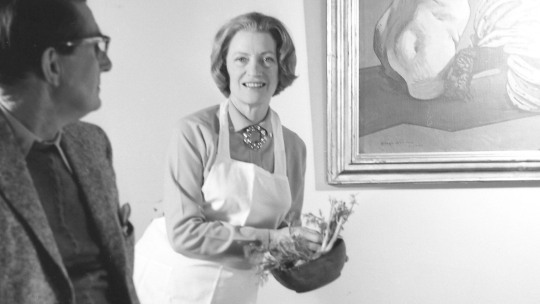
She could have written a very good cookbook by all accounts. She was a virtuoso chef.
She remained friends with the Paris crowd. In particular she was close to Picasso. Lee Miller's son recalls going over to Picasso's home as a child. He even wrote a book about the time he bit Picasso, as a child, called ‘The Boy Who Bit Picasso’.
Lee even reconciled with Man Ray. Lee and Man Ray last met in London in 1975, at Man Ray's retrospective at the Institute of Contemporary Arts. By now, he was in a wheelchair and Lee Miller was a drunk.
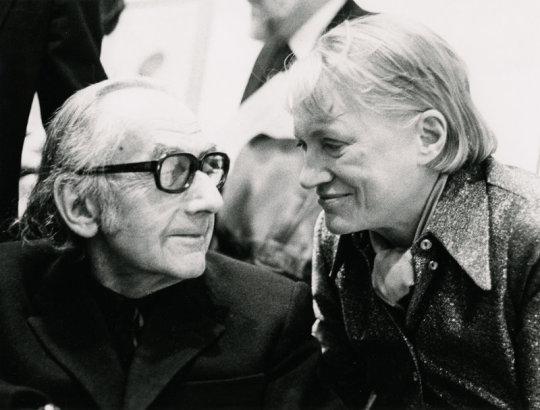
Lee Miller died of cancer in 1977. By the end she was overweight, an alcoholic, ravaged by depression, and tortured by her husband’s affair with a trapeze artist. Anyone meeting Lee Miller then would have been surprised to know that she was once considered the most beautiful woman in the world, second only to Greta Garbo.
But just as she, and her reputation, went out of sight for years. There has in recent years been a resurgence of interest in Lee’s photography, bringing her legacy, and her enduring appeal, further into the light.
As a female icon she never saw herself as a victim. It's remarkable that Miller was able to delight in her body (and in the pleasure others took from it). She saw sex and love as two very different beasts. She was very comfortable living out the truth as she believed it."Emotionally, I need to be completely absorbed in some work or in a man I love," she wrote, but she didn't see why going to bed with someone should upset whichever man she was currently in love with.
Lee insisted that she couldn’t be kept and that women should be able to be as sexually free as men. She was radical, and people made her suffer for it - Man Ray included.
Strikingly beautiful, she was used to submitting to the male gaze and even subverting it. A less spirited woman might have been crushed by these alpha males, but Miller, unfazed, determinedly transformed herself from passive model to active artist.

Her son, Antony Penrose, observed in his 1998 biography of his mother, The Legendary Lee Miller: Photographer, 1907–1977, her unique background capturing uncanny moments and haunting, bizarre portraits during the heyday of the Surrealist movement served her well in war photography. Penrose wrote:
“Unexpectedly, among the reportage, the mud, the bullets, we find photographs where the unreality of war assumes an almost lyrical beauty....On reflection I realise that the only meaningful training of a war correspondent is to first be a Surrealist—then nothing in life is too unusual.”
But it was the very nature of unconventionality of her career trajectory that hampered her historical reputation.
Her early association with the Paris Surrealists - particularly her role as Man Ray's "perversely enchanting muse" - overshadowed her own artistic accomplishments.
Her abandonment of photography, and the consignment of all her work to her own attic also limited her impact during her lifetime.
Her association with fashion also coloured the interpretation of Miller's work. As her biographer Carolyn Burke states, "to this day, her life inspires features in the same glossy magazines for which she posed...this approach turns the real woman in to a screen onto which beholders project their fantasies", and further perpetuates the legend of Lee Miller as an "American free spirit wrapped in the body of a Greek goddess".
The force of her beauty, effervescent personality and high octane biography will always remain central to interpreting her work.
Today Miller has been recognised as among the most original and ambitious photographic artists of the 20th century, and a subtly transgressive artist, who - as Lynn Hilditch asserts in Lee Miller, Photography, Surrealism and the Second World War - took off from her Surrealist background and "pushed the boundaries both of art and war photography, often using unconventional methods to comment on such multifaceted issues as sex, gender, death, and war"
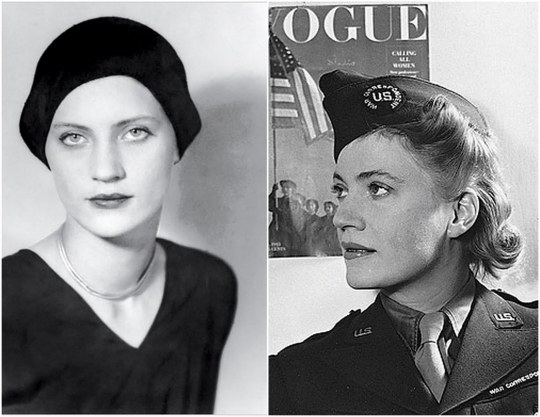
199 notes
·
View notes
Photo
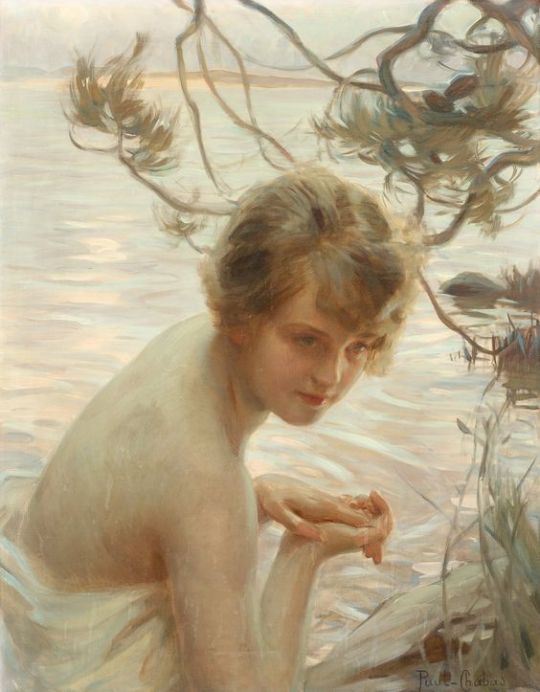
Paul Emile Chabas, Young Lady by the Water
45 notes
·
View notes

